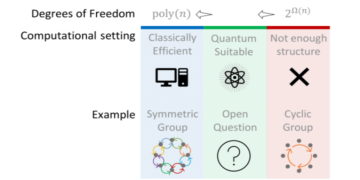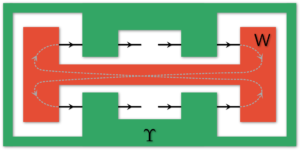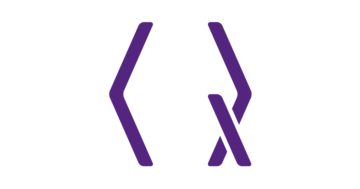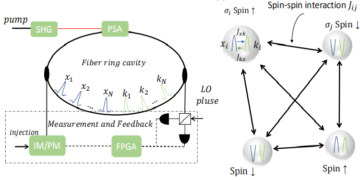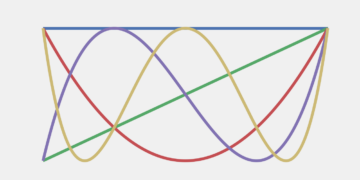1Department of Physics, Indian Institute of Technology Roorkee, Roorkee 247667, India
2School of Physical and Mathematical Sciences, Nanyang Technological University, Singapore 637371, Singapore
3Centre for Quantum Technologies, National University of Singapore, Singapore 117543, Singapore
4Centre for Photonics and Quantum Communication Technology, Indian Institute of Technology Roorkee, Roorkee 247667, India
5Institute of Theoretical Physics and Astrophysics, University of Gdańsk, 80-308 Gdańsk, Poland
6School of Mathematics and Physics, Xiamen University Malaysia, 43900 Sepang, Malaysia
Find this paper interesting or want to discuss? Scite or leave a comment on SciRate.
Abstract
We describe a complete method for a precise study of gravitational interaction between two nearby quantum masses. Since the displacements of these masses are much smaller than the initial separation between their centers, the displacement-to-separation ratio is a natural parameter in which the gravitational potential can be expanded. We show that entanglement in such experiments is sensitive to initial relative momentum only when the system evolves into non-Gaussian states, i.e., when the potential is expanded at least up to the cubic term. A pivotal role of force gradient as the dominant contributor to position-momentum correlations is demonstrated. We establish a closed-form expression for the entanglement gain, which shows that the contribution from the cubic term is proportional to momentum and from the quartic term is proportional to momentum squared. From a quantum information perspective, the results find applications as a momentum witness of non-Gaussian entanglement. Our methods are versatile and apply to any number of central interactions expanded to any order.
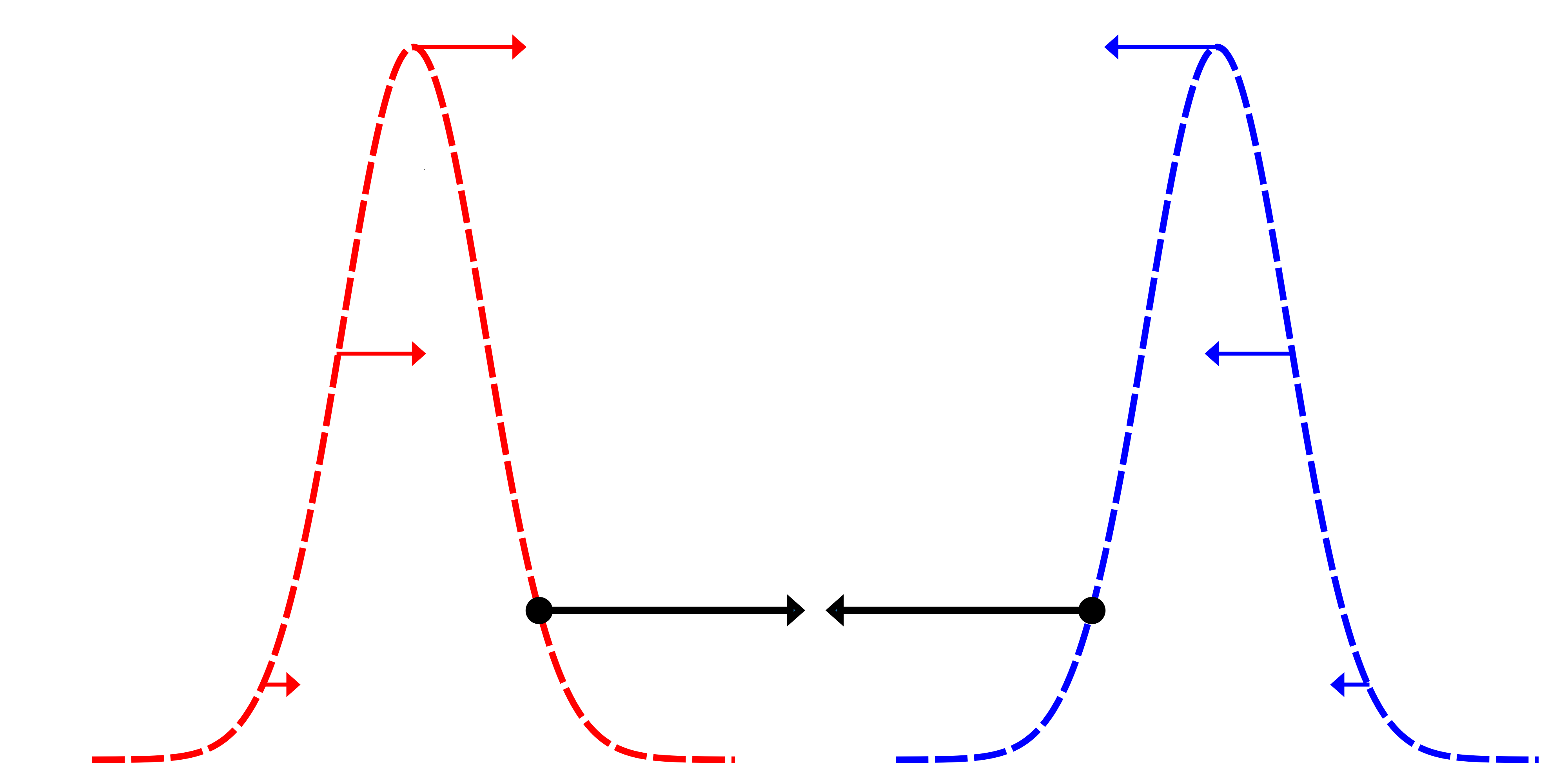
Popular summary
► BibTeX data
► References
[1] R. V. Pound and G. A. Rebka. “Apparent Weight of Photons”. Physical Review Letters 4, 337 (1960).
https://doi.org/10.1103/PhysRevLett.4.337
[2] J. C. Hafele and R. E. Keating. “Around-the-World Atomic Clocks: Observed Relativistic Time Gains”. Science 177, 168 (1972).
https://doi.org/10.1126/science.177.4044.168
[3] R. Colella, A. W. Overhauser, and S. A. Werner. “Observation of Gravitationally Induced Quantum Interference”. Physical Review Letters 34, 1472 (1975).
https://doi.org/10.1103/PhysRevLett.34.1472
[4] A. Peters, K. Y. Chung, and S. Chu. “Measurement of gravitational acceleration by dropping atoms”. Nature 400, 849 (1999).
https://doi.org/10.1038/23655
[5] V. V. Nesvizhevsky, H. G. Börner, A. K. Petukhov, H. Abele, S. Baeßler, F. J. Rueß, T. Stöferle, A. Westphal, A. M. Gagarski, G. A. Petrov, and A. V. Strelkov. “Quantum states of neutrons in the Earth’s gravitational field”. Nature 415, 297 (2002).
https://doi.org/10.1038/415297a
[6] P. Asenbaum, C. Overstreet, T. Kovachy, D. D. Brown, J. M. Hogan, and M. A. Kasevich. “Phase Shift in an Atom Interferometer due to Spacetime Curvature across its Wave Function”. Physical Review Letters 118, 183602 (2017).
https://doi.org/10.1103/PhysRevLett.118.183602
[7] S. Bose, A. Mazumdar, G. W. Morley, H. Ulbricht, M. Toroš, M. Paternostro, A. A. Geraci, P. F. Barker, M. S. Kim, and G. Milburn. “Spin Entanglement Witness for Quantum Gravity”. Physical Review Letters 119, 240401 (2017).
https://doi.org/10.1103/PhysRevLett.119.240401
[8] C. Marletto and V. Vedral. “Gravitationally Induced Entanglement between Two Massive Particles is Sufficient Evidence of Quantum Effects in Gravity”. Physical Review Letters 119, 240402 (2017).
https://doi.org/10.1103/PhysRevLett.119.240402
[9] A. Al Balushi, W. Cong, and R. B. Mann. “Optomechanical quantum Cavendish experiment”. Physical Review A 98, 043811 (2018).
https://doi.org/10.1103/PhysRevA.98.043811
[10] T. Krisnanda, M. Zuppardo, M. Paternostro, and T. Paterek. “Revealing Nonclassicality of Inaccessible Objects”. Physical Review Letters 119, 120402 (2017).
https://doi.org/10.1103/PhysRevLett.119.120402
[11] T. Krisnanda, G. Y. Tham, M. Paternostro, and T. Paterek. “Observable quantum entanglement due to gravity”. npj Quantum Information 6, 12 (2020).
https://doi.org/10.1038/s41534-020-0243-y
[12] S. Qvarfort, S. Bose, and A. Serafini. “Mesoscopic entanglement through central–potential interactions”. Journal of Physics B: Atomic, Molecular and Optical Physics 53, 235501 (2020).
https://doi.org/10.1088/1361-6455/abbe8d
[13] S. Rijavec, M. Carlesso, A. Bassi, V. Vedral, and C. Marletto. “Decoherence effects in non-classicality tests of gravity”. New Journal of Physics 23, 043040 (2021).
https://doi.org/10.1088/1367-2630/abf3eb
[14] K. Kustura, C. Gonzalez-Ballestero, Andrés de los Ríos Sommer, N. Meyer, R. Quidant, and O. Romero-Isart. “Mechanical Squeezing via Unstable Dynamics in a Microcavity”. Physical Review Letters 128, 143601 (2022).
https://doi.org/10.1103/PhysRevLett.128.143601
[15] T. W. van de Kamp, R. J. Marshman, S. Bose, and A. Mazumdar. “Quantum gravity witness via entanglement of masses: Casimir screening”. Physical Review A 102, 062807 (2020).
https://doi.org/10.1103/PhysRevA.102.062807
[16] R. J. Marshman, A. Mazumdar, R. Folman, and S. Bose. “Constructing nano-object quantum superpositions with a Stern-Gerlach interferometer”. Physical Review Research 4, 023087 (2022).
https://doi.org/10.1103/PhysRevResearch.4.023087
[17] M. Aspelmeyer, T. J. Kippenberg, and F. Marquardt. “Cavity optomechanics”. Reviews of Modern Physics 86, 1391 (2014).
https://doi.org/10.1103/RevModPhys.86.1391
[18] B. Abbott et al. “Observation of a kilogram-scale oscillator near its quantum ground state”. New Journal of Physics 11, 073032 (2009).
https://doi.org/10.1088/1367-2630/11/7/073032
[19] C. Whittle et al. “Approaching the motional ground state of a 10-kg object”. Science 372, 1333 (2021).
https://doi.org/10.1126/science.abh2634
[20] J. Chan, T. P. M. Alegre, A. H. Safavi-Naeini, J. T. Hill, A. Krause, S. Gröblacher, M. Aspelmeyer, and O. Painter. “Laser cooling of a nanomechanical oscillator into its quantum ground state”. Nature 478, 89 (2011).
https://doi.org/10.1038/nature10461
[21] T. A. Palomaki, J. D. Teufel, R. W. Simmonds, and K. W. Lehnert. “Entangling Mechanical Motion with Microwave Fields”. Science 342, 710 (2013).
https://doi.org/10.1126/science.1244563
[22] N. Fiaschi, B. Hensen, A. Wallucks, R. Benevides, J. Li, T. P. M. Alegre, and S. Gröblacher. “Optomechanical quantum teleportation”. Nature Photonics 15, 817 (2021).
https://doi.org/10.1038/s41566-021-00866-z
[23] R. Riedinger, A. Wallucks, Igor Marinković, C. Löschnauer, M. Aspelmeyer, S. Hong, and S. Gröblacher. “Remote quantum entanglement between two micromechanical oscillators”. Nature 556, 473 (2018).
https://doi.org/10.1038/s41586-018-0036-z
[24] A. Datta and H. Miao. “Signatures of the quantum nature of gravity in the differential motion of two masses”. Quantum Science and Technology 6, 045014 (2021).
https://doi.org/10.1088/2058-9565/ac1adf
[25] J. S. Pedernales, K. Streltsov, and M. B. Plenio. “Enhancing Gravitational Interaction between Quantum Systems by a Massive Mediator”. Physical Review Letters 128, 110401 (2022).
https://doi.org/10.1103/PhysRevLett.128.110401
[26] F. Roccati, B. Militello, E. Fiordilino, R. Iaria, L. Burderi, T. Di Salvo, and F. Ciccarello. “Quantum correlations beyond entanglement in a classical-channel model of gravity”. Scientific Reports 12, 17641 (2022).
https://doi.org/10.1038/s41598-022-22212-1
[27] G. Vidal and R. F. Werner. “Computable measure of entanglement”. Physical Review A 65, 032314 (2002).
https://doi.org/10.1103/PhysRevA.65.032314
[28] G. Adesso, A. Serafini, and F. Illuminati. “Extremal entanglement and mixedness in continuous variable systems”. Physical Review A 70, 022318 (2004).
https://doi.org/10.1103/PhysRevA.70.022318
[29] G. Adesso and F. Illuminati. “Gaussian measures of entanglement versus negativities: Ordering of two-mode gaussian states”. Physical Review A 72, 032334 (2005).
https://doi.org/10.1103/PhysRevA.72.032334
[30] B. M. Garraway. “Extended Gaussian wavepacket dynamics”. Journal of Physics B: Atomic, Molecular and Optical Physics 33, 4447 (2000).
https://doi.org/10.1088/0953-4075/33/20/318
[31] C. Weedbrook, S. Pirandola, R. García-Patrón, N. J. Cerf, T. C. Ralph, J. H. Shapiro, and S. Lloyd. “Gaussian quantum information”. Reviews of Modern Physics 84, 621 (2012).
https://doi.org/10.1103/RevModPhys.84.621
[32] M. A. Schlosshauer. “Decoherence and the Quantum-To-Classical Transition”. Springer-Verlag, Germany. (2007). 1st edition.
https://doi.org/10.1007/978-3-540-35775-9
[33] W. H. Press, S. A. Teukolsky, H. A. Bethe, W. T. Vetterling, and B. P. Flannery. “Numerical Recipes”. Cambridge University Press, USA. (2007). 3rd edition.
[34] A. Kumar. “An accurate pentadiagonal matrix solution for the time-dependent Schrödinger equation”. Zenodo/7275668 (2022).
https://doi.org/10.5281/zenodo.7275668
[35] A. Kumar and P. Arumugam. “An accurate pentadiagonal matrix solution for the time-dependent Schrödinger equation”. arXiv:2205.13467 (2022).
https://doi.org/10.48550/arXiv.2205.13467
arXiv:2205.13467
[36] A. Kumar, T. Krisnanda, P. Arumugam, and T. Paterek. “Nonclassical trajectories in head-on collisions”. Quantum 5, 506 (2021).
https://doi.org/10.22331/q-2021-07-19-506
[37] H. Miao, D. Martynov, H. Yang, and A. Datta. “Quantum correlations of light mediated by gravity”. Physical Review A 101, 063804 (2020).
https://doi.org/10.1103/PhysRevA.101.063804
[38] S. Bose, A. Mazumdar, M. Schut, and M. Toroš. “Mechanism for the quantum natured gravitons to entangle masses”. Physical Review D 105, 106028 (2022).
https://doi.org/10.1103/PhysRevD.105.106028
[39] R. J. Marshman, A. Mazumdar, and S. Bose. “Locality and entanglement in table-top testing of the quantum nature of linearized gravity”. Physical Review A 101, 052110 (2020).
https://doi.org/10.1103/PhysRevA.101.052110
[40] S. M. Blinder. “Evolution of a Gaussian Wavepacket”. American Journal of Physics 36, 525 (1968).
https://doi.org/10.1119/1.1974961
[41] T. Krisnanda, T. Paterek, M. Paternostro, and Timothy C. H. Liew. “Quantum neuromorphic approach to efficient sensing of gravity-induced entanglement”. Physical Review D 107, 086014 (2023).
https://doi.org/10.1103/PhysRevD.107.086014
[42] T. Emig, N. Graham, R. L. Jaffe, and M. Kardar. “Casimir Forces between Arbitrary Compact Objects”. Physical Review Letters 99, 170403 (2007).
https://doi.org/10.1103/PhysRevLett.99.170403
[43] A. Serafini, F. Illuminati, and S. D. Siena. “Symplectic invariants, entropic measures and correlations of Gaussian states”. Journal of Physics B: Atomic, Molecular and Optical Physics 37, L21 (2003).
https://doi.org/10.1088/0953-4075/37/2/l02
[44] R. Simon. “Peres-Horodecki Separability Criterion for Continuous Variable Systems”. Physical Review Letters 84, 2726 (2000).
https://doi.org/10.1103/PhysRevLett.84.2726
[45] A. Ekert and P. L. Knight. “Entangled quantum systems and the Schmidt decomposition”. American Journal of Physics 63, 415 (1995).
https://doi.org/10.1119/1.17904
[46] Ho Kwan Yuet. “Quantum Entanglement in Continuous System”. PhD thesis. The Chinese University of Hong Kong, China. (2004).
https://doi.org/10.13140/RG.2.2.24338.45764
[47] C. Roberts, A. Milsted, M. Ganahl, A. Zalcman, B. Fontaine, Y. Zou, J. Hidary, G. Vidal, and S. Leichenauer. “TensorNetwork: A Library for Physics and Machine Learning”. arXiv:1905.01330 (2019).
https://doi.org/10.48550/arXiv.1905.01330
arXiv:1905.01330
[48] Google. “GitHub/google/TensorNetwork”.
https://github.com/google/TensorNetwork
[49] Kwan-Yuet “Stephen” Ho. “GitHub/stephenhky/pyqentangle”.
https://github.com/stephenhky/pyqentangle
Cited by
Could not fetch Crossref cited-by data during last attempt 2023-05-15 13:35:56: Could not fetch cited-by data for 10.22331/q-2023-05-15-1008 from Crossref. This is normal if the DOI was registered recently. On SAO/NASA ADS no data on citing works was found (last attempt 2023-05-15 13:35:57).
This Paper is published in Quantum under the Creative Commons Attribution 4.0 International (CC BY 4.0) license. Copyright remains with the original copyright holders such as the authors or their institutions.
- SEO Powered Content & PR Distribution. Get Amplified Today.
- PlatoAiStream. Web3 Data Intelligence. Knowledge Amplified. Access Here.
- Minting the Future w Adryenn Ashley. Access Here.
- Buy and Sell Shares in PRE-IPO Companies with PREIPO®. Access Here.
- Source: https://quantum-journal.org/papers/q-2023-05-15-1008/
- :is
- :not
- :where
- ][p
- $UP
- 1
- 10
- 102
- 107
- 11
- 12
- 13
- 14
- 15%
- 1999
- 1st
- 20
- 2011
- 2012
- 2013
- 2014
- 2017
- 2018
- 2019
- 2020
- 2021
- 2022
- 2023
- 22
- 23
- 24
- 26
- 27
- 28
- 30
- 39
- 3rd
- 40
- 49
- 7
- 70
- 710
- 72
- 8
- 84
- 9
- 98
- a
- above
- ABSTRACT
- acceleration
- access
- accurate
- across
- Additionally
- affiliations
- AL
- American
- among
- an
- and
- any
- apart
- Application
- applications
- Apply
- approach
- ARE
- AS
- astrophysics
- At
- atom
- attracted
- author
- authors
- basis
- BE
- between
- Beyond
- Break
- by
- cambridge
- CAN
- Centers
- central
- chan
- China
- chinese
- Clocks
- closer
- comment
- Commons
- Communication
- complete
- continuous
- contribution
- contributor
- copyright
- correlations
- could
- data
- demonstrated
- Den
- describe
- developed
- developing
- discuss
- distance
- dominant
- Dropping
- due
- during
- dynamics
- e
- E&T
- each
- earth
- edition
- effects
- efficient
- establish
- Ether (ETH)
- evidence
- evolves
- expanded
- expansion
- expected
- experiment
- experiments
- expression
- field
- Fields
- Figure
- Find
- For
- Force
- Forces
- found
- from
- function
- functions
- further
- Gain
- Gains
- Germany
- Give
- gravitational
- gravity
- Ground
- harvard
- higher
- holders
- Hong
- Hong Kong
- HTTPS
- i
- if
- in
- inaccessible
- Indian
- information
- initial
- Institute
- institutions
- interaction
- interactions
- interesting
- International
- into
- IT
- ITS
- JavaScript
- journal
- Kim
- Knight
- Kong
- Last
- later
- learning
- least
- Leave
- Library
- License
- light
- los
- machine
- machine learning
- Malaysia
- masses
- massive
- mathematical
- mathematics
- Matrix
- max-width
- May..
- measure
- measures
- mechanical
- method
- methods
- Meyer
- model
- Modern
- molecular
- moment
- Momentum
- Month
- more
- most
- motion
- much
- National
- Natural
- Nature
- Near
- neutrons
- New
- no
- normal
- number
- object
- objects
- of
- on
- ONE
- only
- open
- optical
- Optical physics
- or
- order
- Origin
- original
- Other
- Others
- our
- Paper
- parameter
- parts
- perspective
- Photons
- physical
- Physics
- pivotal
- plato
- Plato Data Intelligence
- PlatoData
- plays
- positions
- potential
- pound
- powers
- precise
- press
- properties
- published
- publisher
- Quantum
- quantum entanglement
- quantum information
- quantum systems
- ratio
- recently
- Recipes
- references
- registered
- remains
- Reports
- research
- Results
- Revealed
- review
- Reviews
- Rise
- Role
- s
- scenarios
- Science
- Science and Technology
- SCIENCES
- screening
- sensitive
- shift
- show
- Shows
- Simon
- since
- Singapore
- smaller
- solution
- Squared
- State
- States
- straightforward
- Study
- such
- sufficient
- system
- Systems
- technological
- Technologies
- Technology
- term
- terms
- Testing
- tests
- than
- that
- The
- their
- theoretical
- These
- thesis
- they
- this
- Through
- time
- Title
- to
- traditional
- transition
- treat
- two
- typical
- under
- university
- URL
- USA
- versatile
- Versus
- via
- volume
- W
- want
- was
- Wave
- we
- weight
- when
- which
- with
- witness
- Work
- works
- year
- zephyrnet

